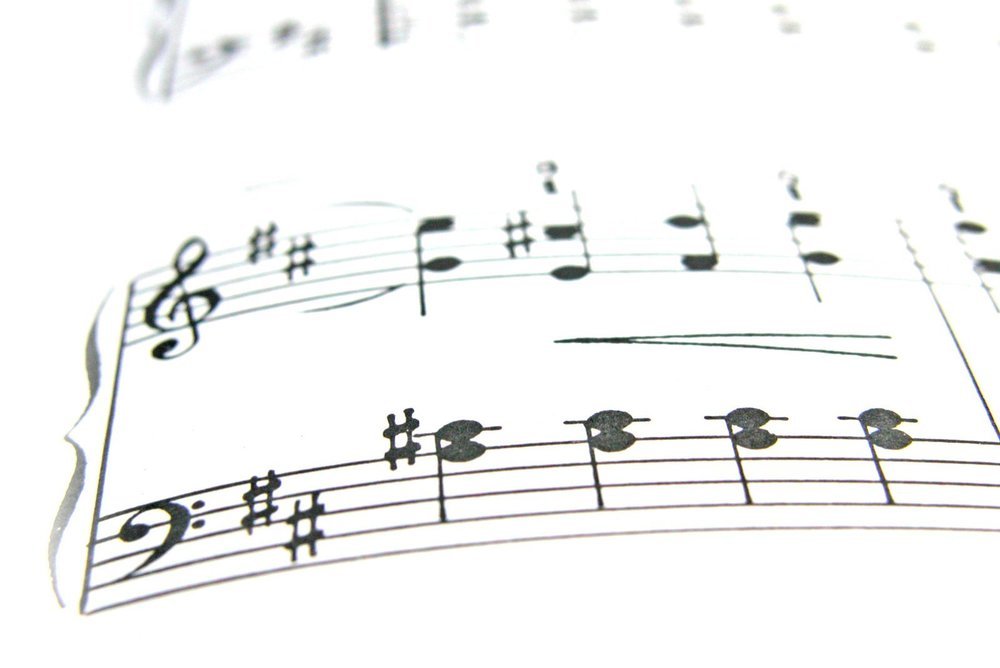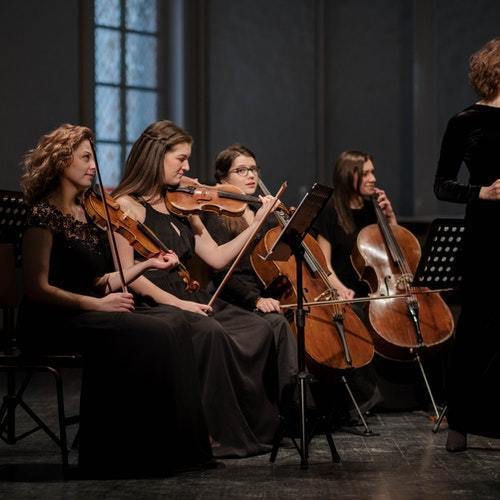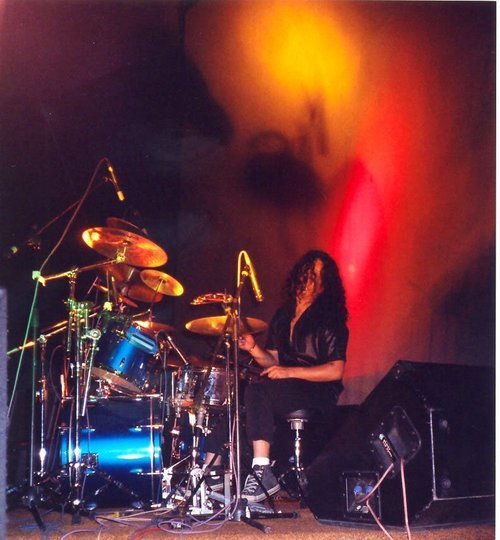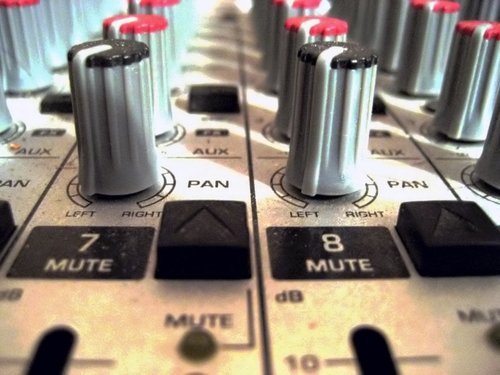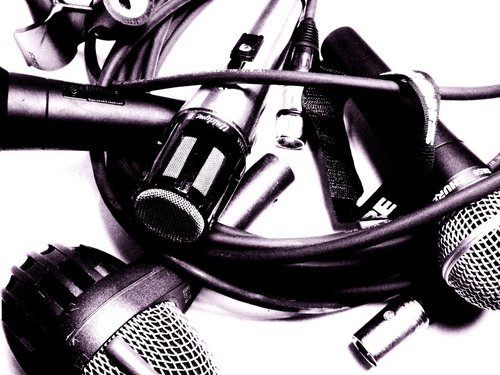The music world today is a whirlwind of creative energy, business demands, and constant communication. As a music professional, whether you’re a solo artist, band member, producer, or manager, staying organized is not only helpful but indeed essential for survival and success. I’ve seen firsthand how the right digital tools can transform a chaotic workflow into a streamlined operation, freeing up precious time for what truly matters: the music. This guide will explore a spectrum of digital organization tools, from versatile all-rounders to highly specialized solutions designed for the unique needs of our industry.
Laying the groundwork essential tools for everyday productivity
Before diving into the music-specific tech, let’s talk about the bedrock of any organized professional’s toolkit. These are the general productivity apps that help manage the daily grind, ensuring that nothing falls through the cracks. I’m talking about task managers, calendars, communication platforms, and idea-capturing tools. In my experience, getting these foundational elements right can make a world of difference, regardless of what specific niche of the music industry you operate in. These tools are about creating a solid base upon which more specialized systems can be built, ensuring that the fundamental aspects of your work are handled efficiently.
Conquering chaos with task management
When it comes to keeping track of countless to-dos, from songwriting deadlines to tour logistics, a robust task manager is non-negotiable. Tools like OmniFocus, which I’ve found to be a powerhouse for implementing the Getting Things Done (GTD) methodology, allow for intricate project and task organization. It functions like a ‘digital brain,’ capturing tasks quickly via hotkeys, voice commands, or even email forwarding, and organizing them with projects, tags, start dates, and due dates; its ‘Forecast’ view is particularly helpful for daily planning, and it even supports project templates for recurring events. For those seeking cross-platform compatibility and collaborative features, leveraging Todoist for its versatile task management capabilities is an excellent choice, offering a free tier and robust features for shared projects, though it notably lacks start dates. Simpler options like Google Keep or Apple Reminders can work for basic needs, but for complex music careers, dedicated apps provide more muscle. Project management platforms like Asana or Trello also excel here, particularly for team-based projects. Asana, for instance, allows for visual tracking of progress, setting up task dependencies critical for complex projects like album releases, and facilitates team communication through comments and file attachments. The key is to find a system that aligns with how you think and work, and then commit to using it consistently.
Synchronizing schedules and communication
A musician’s schedule can be a beast, often juggling rehearsals, recording sessions, gigs, promotional activities, and personal commitments. Shared digital calendars are indispensable in this regard. Using tools like Google Calendar or Apple Calendar for shared scheduling, especially when shared among band members, managers, and even booking agents (with appropriate privacy settings like title-only views for agents), ensures everyone is on the same page and helps prevent those dreaded double-bookings. For internal band or team communication, platforms like Slack or Discord have become game-changers. They allow for organized conversations in dedicated channels (e.g., ‘New Album Ideas,’ ‘Tour Logistics,’ ‘Promo Assets,’ or even channels for specific setlists or recording projects), keeping discussions focused and out of cluttered email inboxes. Slack’s integration with file-sharing services like Google Drive or Dropbox further streamlines collaboration, making it easy to share demos, lyric sheets, project files, or stage plots without resorting to endless email attachments.
Capturing creativity and managing files
Inspiration can strike anywhere, often at the most inconvenient times. Having tools to capture those fleeting ideas is crucial for any creative professional. For brainstorming and structuring larger concepts, mind-mapping tools such as MindNode (or XMind for other platforms) are fantastic for non-linear thinking, allowing you to visually branch out from a central theme, make quick connections between nodes, and even convert ideas into to-do items exportable to task managers. For journaling, reflections on rehearsals, or jotting down lyrics, apps like DayOne, which can handle text, photos, and voice memos, or the versatile Evernote, serve as digital notebooks, always accessible on your phone or computer. Evernote is also great for clipping web articles or scanning handwritten notes. Inspiration can come from anywhere, even unexpected places; some artists explore diverse connections, like how music can help plants, showing how broad the field of creative stimuli can be. And, of course, reliable cloud storage and file-sharing solutions like Google Drive, Dropbox, or OneDrive are essential for keeping project files, demos, press kits, contracts, setlists, and riders accessible, backed up, and easily shareable with collaborators. Establishing a clear folder structure within these services is a simple yet powerful organizational habit. For instance, a structure like /MusicProjects/[AlbumTitle]/[SongTitle]/[AudioFiles, Lyrics, SessionData] can keep digital assets tidy and easily accessible when collaborating or revisiting old work.
The command center intranets and integrated platforms
As your music career or business grows, juggling numerous standalone apps can become a new source of disorganization, with information scattered across different platforms. This is where the concept of a centralized digital workspace, or an intranet, comes into play. Especially for teams, music startups, or artists managing multiple complex projects, having a single source of truth can dramatically improve efficiency and collaboration. These platforms aim to bring together communication, file management, project tracking, and knowledge sharing into one cohesive environment, reducing the need to constantly switch between different applications and ensuring everyone is working with the most up-to-date information.
Building an internal hub with intranets
For larger teams or music businesses, dedicated intranet solutions can provide a robust framework. Understanding the strategic value of a modern intranet site and its essential features, as detailed in guides like those from Omnia, can be crucial for streamlining operations. Omnia itself, for instance, is a prime example of a platform offering comprehensive tools for internal communications, document management, and collaboration, which can be tailored to a company’s specific needs, such as managing rehearsal schedules or organizing studio resources. As highlighted by Ominocity’s insights on intranet tools in music and arts startups, these systems prevent information silos and streamline onboarding by providing a central repository for everything from creative briefs and brand guidelines to company policies and project timelines. The ability to grant custom access to external collaborators and integrate with other essential tools like Google Drive, Slack, or Trello further enhances their power, creating a truly unified digital workspace that many businesses find invaluable for supporting growth and scalability.
All in one workspaces and industry specific hubs
Beyond traditional intranets, versatile ‘all-in-one’ workspace apps like Notion offer incredible flexibility for individuals and teams to build custom dashboards, databases, and project management systems. I’ve seen musicians use Notion to organize everything from song ideas and lyric databases using its rich text and media capabilities, to tour schedules, promotional content calendars, equipment inventories, and even build knowledge bases for production techniques. For those looking for solutions built specifically by musicians for musicians, platforms like Stage Portal, which offers dedicated band management features, aim to centralize band management, handling multiple band projects, gig scheduling, crew management, and communication with venues all in one place. Similarly, SaaS (Software as a Service) solutions like Reprtoir, a comprehensive music business management tool, offer features covering catalog management (including detailed metadata for songs and albums), release building, secure music sharing for promotion, and even royalty accounting, demonstrating the trend towards integrated platforms that cater to the multifaceted nature of the music industry. For further reading on useful tools, independent musicians can explore resources like the Symphonic Blog’s list of productivity tools.
Tuning in specialized tools for the music craft and business
While general productivity tools are foundational, the music industry has a universe of specialized software and platforms designed to address the unique challenges and opportunities we face. From the spark of creation to the complexities of distribution and promotion, these tools are often the engines driving modern music careers. They understand the language of music, the workflows of artists, and the dynamics of the industry, offering tailored solutions that general-purpose software simply can’t match.
Crafting sound DAWs and production tools
At the heart of music creation are Digital Audio Workstations (DAWs). Programs like Pro Tools (often considered an industry standard, especially in larger studios), Apple’s Logic Pro (a favorite for Mac users due to its comprehensive features, vast sound libraries, virtual instruments, and intuitive interface for ‘in the box’ production), and Ableton Live, renowned for its live performance capabilities and unique ‘Session View’ ideal for real-time arrangement and beatmatching, are indispensable. Of course, the environment where you record and mix plays a huge role, and understanding The Importance of Room Acoustics in Music Recording can significantly elevate your production quality. Other popular choices include FL Studio (historically Fruity Loops, very popular with electronic and hip-hop producers for loop and sample-based work), Studio One from PreSonus (noted for its user-friendly interface), and Reason (known for its virtual rack simulation mimicking hardware). These platforms are where raw ideas are recorded, edited, mixed, and transformed into finished tracks. To enhance workflow, physical tools like Editors Keys offer specialized keyboards and covers with pre-programmed shortcuts for popular DAWs like Ableton or Serato DJ, which can be a real timesaver. Similarly, ensuring your studio gear is well-maintained, including considering things like Replacement Covers for Music Studios to protect valuable equipment, contributes to a professional and efficient workspace. For sourcing sounds, platforms like Loopmasters, often featured in lists of top digital tools for music freelancers, or Splice provide vast libraries of royalty-free samples and loops, with Splice also offering integrated plugins and a collaborative community. Tracklib offers a revolutionary way to legally clear samples from existing songs, simplifying a historically complex process.

A professionally designed recording studio control room, like the one pictured with its large mixing console and acoustic treatment, is the hub of music production.
The digital realm of music production extends far beyond just the DAW itself. An entire ecosystem of plug-ins, such as virtual instruments, effects processors like reverbs, delays, compressors, and EQs, allows for sonic shaping that was once only possible with expensive hardware. Companies like Waves and Native Instruments are giants in this space, but countless independent developers also offer innovative tools. Mastering these tools, understanding signal flow, and learning how to apply effects judiciously are all part of the modern producer’s skillset. It’s a deep well, but the creative possibilities are virtually limitless. The image below shows a detailed close-up of an audio mixing console, highlighting the intricate controls, including the numerous faders, knobs, and level meters visible on the channel strips, which producers and engineers meticulously use to sculpt sound and achieve the perfect mix.
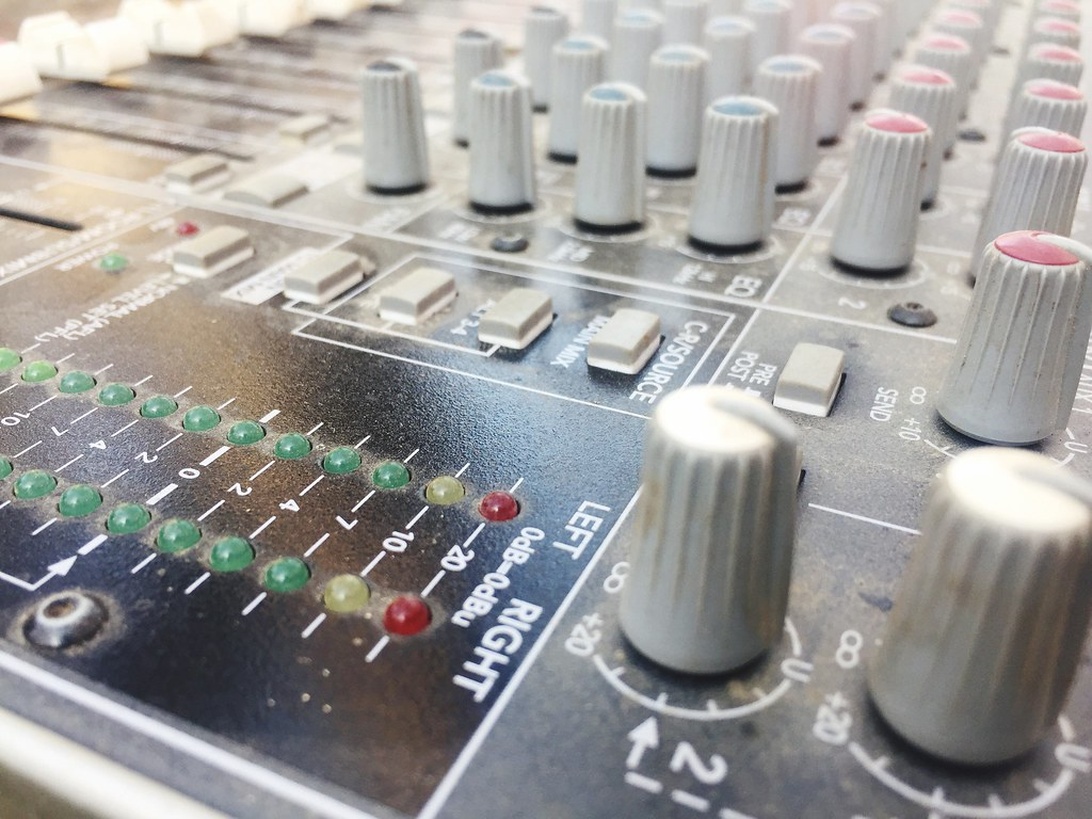
A detailed view of an audio mixing console’s faders, knobs, and channel strips, essential equipment for sound mixing and processing in music production.
Amplifying reach artist management, promotion, and distribution
Once the music is made, getting it heard and managing your presence is key. Resources such as ICMP’s guide to essential marketing tools highlight the utility of Spotify for Artists and YouTube for Artists. These platforms provide invaluable analytics about your audience demographics, listening habits, and geographic trends, helping you tailor marketing strategies, make informed tour decisions, and understand where your fans are. These platforms, along with Apple Music’s artist tools, also allow for profile customization and direct pitching of new releases to editorial playlists, a crucial step for visibility. For gigging musicians, Bandsintown helps manage and promote tour dates, automatically notifying fans when you’re playing nearby by syncing with your website and social channels. Digital aggregators, as discussed by sources like Vocal.Media on maximizing digital music tools, are crucial for distributing your music to major streaming services like Spotify, Apple Music, Deezer, and many others. They handle the technical specifications, copyright requirements, and royalty collection, making global distribution accessible to independent artists.
For more comprehensive artist management, tools like Songspace (for catalog management, advanced metadata handling, collaborative song projects, and link tracking analysis), Artist Growth (for tour, merch, finance, and royalty management, offering an artist profile page and monthly reports), or Band Mule (a private band organizer and calendar for planning gigs, managing setlists, and sharing files and songs) can be incredibly helpful. Don’t underestimate the power of a well-maintained website, perhaps built with a service like Onesheet (which can automate artist profile creation by pulling in stats from Spotify and social media), serving as your central online hub. Building and nurturing a direct-to-fan email list via platforms like Mailchimp, which allows for creating, sending, and analyzing newsletter campaigns, is also vital, giving you a direct line of communication with your audience that isn’t dependent on social media algorithms. These efforts all contribute to your overall brand, and learning How to Boost Your Image as a Musician is a continuous process in today’s competitive landscape. Services like CD Baby also offer distribution alongside other artist services like warehousing and order fulfillment, catering to the independent musician.
Handling the numbers financial, legal, and analytics
The business side of music, while perhaps less glamorous than the creative side, is equally important for a sustainable career. Budgeting apps like Mint, often recommended for independent artists’ financial tracking, can help track income and expenses, analyze transactions, manage budgets for recording projects or tours, and gain a clearer picture of their financial health, even suggesting ways to save money. For bands on the road, a Gig Quote Calculator, like specific tools from bandsforhire.net or simpler online versions, can save time estimating travel costs using map APIs and generating quotes for performances. As mentioned earlier, platforms like Reprtoir include royalty accounting software, which is vital for transparently managing earnings and ensuring collaborators are paid correctly and on time. This is an area where specialized software can save an immense amount of administrative headache.
For deeper insights into your music’s performance across various platforms, analytics services like Chartmetric, a powerful tool for music data analysis, or Soundcharts aggregate data on streams, playlist placements, social media engagement, radio airplay, and more. These platforms provide a comprehensive view of your career trajectory, identify trends, help you study competitors, and make data-informed decisions about marketing, touring, and collaborations. Understanding your audience demographics and listening habits through these tools, perhaps even visualizing them with custom dashboards using services like DashThis, can be incredibly powerful for strategic planning.
Exploring other niche and efficiency tools
The landscape of digital tools for musicians is rich and varied, with many other specific solutions catering to particular needs. For instance, Sheet Music Scanner can digitize printed scores, allowing you to hear them played back on a chosen instrument and at your preferred speed, making them easier to edit or share. For those looking to improve their musical ear, apps like SoundGym or EarMaster offer targeted training exercises. If you find yourself frequently typing repetitive information, like your bio, contact details, or standard email responses, a utility like TextExpander, which you can learn more about at their official site, a valuable tool for automating text snippets, can save hours by allowing you to use shortcodes for longer phrases or entire email templates. For creating compelling visual content, which is essential in today’s market, Canva offers user-friendly design tools with templates for social media graphics, posters, and album art, and checking out Canva’s platform for versatile design creation can empower you to produce professional-looking visuals even if you don’t have extensive video editing skills. Rotor Videos can simplify the creation of music videos and promotional clips. Submission platforms like SubmitHub or IndieMono can help you get your music in front of curators and influencers. And for managing work-life balance, apps like Lifeline offer innovative timers with flexible session lengths and planned breaks to help musicians develop an optimal daily rhythm and avoid burnout. This focus on well-being is critical, as Physical Exercise Is Important for Musicians not just for general health, but also for performance stamina and mental clarity.
The algorithm and the artist AI and the future of organization
Artificial Intelligence is no longer a futuristic concept whispered about in tech circles; it’s an increasingly integrated part of the music technology landscape, and its influence on how we organize and create is growing daily. While some may view AI with apprehension, I see it as a potentially powerful assistant that can augment our creativity and streamline tedious tasks, freeing us up to focus on the more human aspects of music. AI-powered tools are emerging in various areas, from composition and production to marketing and administration, and understanding their capabilities is becoming important for staying current. Many are exploring the revolutionary impact of software and app development in music, including AI.
AI in creative processes and productivity
We’re already seeing AI make its mark in tools like ChatGPT, which, as RouteNote Create suggests, can assist with brainstorming lyrics, song titles, exploring thematic concepts, discussing musical structures, or even offering workflow tips and software recommendations. In the realm of production, AI mastering services like Masterchannel aim to provide studio-quality masters optimized for various streaming platforms by emulating a human mastering engineer’s process, offering a quick and often cost-effective alternative to traditional mastering engineers for certain projects. The development of AI in music software also hints at future possibilities like intelligent audio engineering assistants that can suggest EQ settings or compression parameters, and more sophisticated content recommendation engines that can help artists find new collaborators or sounds. These tools aren’t here to replace human creativity but to enhance it, taking care of some of the heavy lifting or offering new avenues for inspiration.
Leveraging AI for data insights and automation
AI also plays a significant role in the data analytics tools mentioned earlier, helping to process vast amounts of information from streaming services, social media, and radio play to deliver actionable insights to artists and their teams. This allows for more targeted marketing campaigns and a better understanding of audience behavior. The continued evolution of SaaS platforms, often leveraging AI, will likely lead to even more sophisticated automation of complex processes like royalty distribution, rights management, and contract analysis, as hinted at by the functionalities in platforms like Artist Growth or BeatSwitch, often cited in discussions about tools for artist managers. The key for music professionals will be to stay informed about these advancements and adapt, thoughtfully incorporating these new technologies into their workflows to improve efficiency and decision-making, rather than being overwhelmed by them.
Orchestrating your success finding your digital harmony
The sheer number of digital tools available to music professionals today can feel overwhelming, like staring at an infinitely complex mixing desk for the first time. But the goal isn’t to use every app, plugin, or platform on the market. It’s about finding the right combination that harmonizes with your specific needs, your individual workflow, and your unique creative process. What works wonders for a touring rock band managing complex logistics and merchandise might be complete overkill for a solo electronic producer working primarily from a home studio. Similarly, a music educator’s organizational needs, as outlined by resources like those from NAfME focusing on digital tools for music educators, will differ vastly from those of an artist manager juggling multiple client careers or a publisher tracking a vast catalog of compositions.
My own journey with digital tools has been one of constant evolution, a process of trial, error, and refinement spanning many years. I’ve tried countless apps, enthusiastically adopted some, and quietly discarded others that didn’t quite fit. The key, I’ve found, is to start by identifying your biggest pain points. Are you drowning in administrative tasks and missing deadlines? Is communication within your band or team chaotic and inefficient? Are you struggling to capture and organize your creative ideas before they vanish? Pinpoint these bottlenecks first, then research tools that are specifically designed to address those issues. Don’t be afraid to experiment with free trials and simpler versions of software before committing to paid subscriptions. Often, the simplest solution that you’ll actually use consistently is better than the most feature-rich one that gathers digital dust.
Ultimately, these digital tools are just that, tools. They are enablers, not magic wands. The most sophisticated software suite in the world won’t help if the underlying habits, systems, and discipline aren’t in place. Effective organization is a mindset, a commitment to clarity, efficiency, and continuous improvement. The true power comes when you combine the right digital infrastructure with disciplined practices, clear communication protocols, and a proactive approach to managing all the facets of your musical endeavors. By thoughtfully selecting, integrating, and mastering these digital assistants, you can conduct your career with greater precision and less stress, freeing yourself to focus on what truly matters: composing the future of your music and sharing it with the world.
Many musicians and engineers focus on microphones, preamps, and software when striving for sonic excellence. However, a frequently overlooked, yet fundamentally crucial, element is the acoustic environment itself. The room where music is recorded significantly shapes the sound, impacting clarity, balance, and overall impact. This article delves into the vital role of room acoustics and offers practical guidance for creating a recording space that faithfully captures music.
How Sound Behaves in a Room
When an instrument or voice produces sound, waves radiate in all directions. Some waves, called direct sound, travel directly to the microphone, capturing the pure, unaltered source. However, most sound waves interact with the room’s surfaces—walls, ceiling, floor, and objects—creating reflected sound. These reflections bounce around, altering the sound’s tone and adding reverberation. Research from Selby highlights that these reflections are often undesirable in recording, leading to a muddy and unclear sound. The primary goal is to capture mostly direct sound, allowing for flexibility in adding effects during post-production. Capturing a clean, direct sound gives you the most control over the final product. Acoustic Room Treatment
Challenges in Untreated Spaces
Typical home environments, often repurposed as studios, present considerable acoustic challenges. Common problems include unwanted bass frequencies causing vibrations, slapback echoes from corners, and general sonic imbalances, as discussed by Mackie. Thin walls, boxy shapes, low ceilings, and rattling windows, typical in residential buildings, tend to amplify these problems. These spaces often exacerbate sonic anomalies, creating inaccurate monitoring environments that directly affect recording and mixing decisions. Home Studio Acoustics
Acoustic Treatment: Science and Strategies
Acoustic treatment aims to manage reflected sound using two primary methods: absorption and diffusion. Absorption uses materials to absorb sound energy, reducing reflections and ‘deadening’ the room. Common absorbers include foam panels and bass traps. Bass traps, usually thick foam structures placed in corners, are essential for controlling low-frequency build-up. Acoustic panels, thinner and larger, effectively absorb mid and high frequencies and can be strategically placed on walls to address standing waves.
Diffusion: Shaping Natural Ambience
Diffusion, in contrast to absorption, scatters sound reflections, creating a more natural and pleasant reverb. Diffusers, often wooden panels with varying depths, disperse reflections evenly, maintaining a balanced frequency spectrum. Selby emphasizes that an ideal acoustic environment usually combines both absorption and diffusion. Balancing these techniques is crucial for a controlled yet natural-sounding space.
Acoustic Treatment vs. Soundproofing: Understanding the Difference
It’s important to differentiate between acoustic treatment and soundproofing. Soundproofing isolates a room from external noise, preventing sound from entering or escaping using dense materials and sealing gaps. Acoustic treatment, however, focuses on managing sound reflections within the room to optimize it for recording and listening.
Room Modes and Standing Waves
A significant challenge in room acoustics is managing room modes, or standing waves. These are resonant frequencies that occur when a sound’s wavelength aligns with the room’s dimensions. Sonible explains that standing waves cause certain frequencies to be amplified or attenuated at different locations, creating an uneven frequency response, especially in the bass range. This can make recordings sound boomy in some areas and thin in others. Treat Room Modes
Identifying and Addressing Room Modes
Identifying and mapping room modes is essential. This involves calculating room mode frequencies based on dimensions and using a sine wave generator to sweep through frequencies, listening for amplifications or attenuations. Sonible suggests creating an ‘acoustic map’ to pinpoint problem areas. After identification, room modes can be treated with bass traps, panel absorbers, and Helmholtz resonators.
Helmholtz Resonators: Targeted Frequency Control
Helmholtz resonators are tuned absorbers designed to target specific frequencies. They typically consist of an enclosed volume of air connected to the room by a narrow neck. The resonant frequency is determined by the volume of the enclosure and the dimensions of the neck. When sound waves at the resonant frequency enter the neck, the air inside vibrates intensely, dissipating energy. These are particularly useful for addressing specific, problematic room modes that aren’t effectively controlled by broadband absorbers. They can be custom-built or purchased as pre-tuned units.
Room Dimensions and Their Impact
A recording space’s size and shape fundamentally influence its acoustic character. UseMogul highlights that taller rooms (high ceilings) tend to create a more spacious sound, while lower ceilings provide a more controlled sound. Wider rooms improve sound diffusion, leading to a more immersive experience, while narrower rooms can increase reflections and comb filtering. Room Dimensions The practical implication is that different room shapes and sizes will require different treatment strategies. A long, narrow room will need more diffusion on the side walls than a wider room.
Practical Implications of Room Dimensions
Optimizing room dimensions involves strategic speaker placement, acoustic treatment, and room mode calculation. Experimenting with speaker and listening positions to find the ‘sweet spot’ minimizes the influence of standing waves, as UseMogul recommends. Using room mode calculators helps identify problem frequencies for targeted treatment. Multidimensional diffusers can scatter sound waves evenly, improving overall sound quality.
Practical Steps: A Step-by-Step Guide to Acoustic Improvement
Improving room acoustics doesn’t always necessitate expensive professional solutions. Pro-Coustix suggests that identifying the ‘sweet spot’ for listening and strategically placing acoustic foam panels at first reflection points can significantly improve clarity. Studio Acoustics Guide Bass traps in corners are crucial for managing low-frequency build-up. Even DIY solutions like heavy carpeting and thick curtains can help dampen reflections.
Step-by-Step Acoustic Treatment
MusicCityAcoustics recommends an incremental treatment approach. This method allows for fine-tuning and avoids over-dampening. Home Studio Acoustics
Step 1: Early Reflections
Begin by addressing early reflections with broadband panels. Place them at the ‘mirror points’ on the side walls – where you would see the reflection of your speakers if the wall were a mirror.
Step 2: Rear Wall Treatment
Treat the rear wall behind the speakers with thick bass traps or broadband panels to absorb energy and reduce Speaker Boundary Interference Response (SBIR).
Step 3: Ceiling Cloud
Install a ceiling cloud made of acoustic panels or bass traps directly above the listening position to control ceiling reflections.
Step 4: Corner Bass Traps
Place bass traps in all corners to manage low-frequency build-up and room modes.
Step 5: Front Wall Treatment
Treat the front wall behind the speakers with broadband or bass trap panels to address reflections.
Step 6: Late Reflections and Decay Time
Address remaining areas to manage late reflections and overall decay time using diffusers, reflectors, and strategically placed acoustic panels.
Choosing the Right Acoustic Materials
RealTraps emphasizes using professional-grade acoustic treatment materials. Rigid fiberglass, like Owens Corning 703, and mineral wool, like Rockwool, are superior for bass traps and absorber panels due to their broad frequency absorption. Acoustic Basics Avoid household items like egg cartons or packing blankets, as they are ineffective.
Material Comparison
Different materials have different absorption coefficients. Fiberglass and mineral wool generally offer better low-frequency absorption than acoustic foam of the same thickness. Thicker materials generally absorb lower frequencies more effectively.
Combining Absorption and Diffusion
For optimal room acoustics, a combination of absorption and diffusion is often ideal. Absorption controls reflections and reduces reverberation, while diffusion scatters sound, creating a more natural and spacious sound field. In smaller rooms, diffusion can help prevent an overly ‘dead’ sound while still controlling reflections. Strategic placement of diffusers on the rear wall or ceiling can significantly enhance the listening experience.
Beyond Treatment: A Holistic Approach
While acoustic treatment is paramount, other factors contribute to a recording space’s sonic environment. MasteringTheMix highlights speaker placement, recommending an equilateral triangle configuration with the listening position and avoiding placing speakers too close to walls. Monitoring & Room Acoustics
Measurement and Analysis
Tools like Room EQ Wizard (REW) can be used to measure a room’s acoustic response. REW is a free software that can measure frequency response, decay times, and identify room modes. This data can be used to fine-tune acoustic treatment and speaker placement.
Professional Guidance: When to Seek Expert Help
SoundOnSound emphasizes that investing in professional-grade acoustic panels offers significant advantages. Studio SOS While DIY solutions are possible, achieving a professional finish and guaranteed performance can be challenging. Consulting with an acoustician, as UseMogul suggests, can provide tailored recommendations.
Mini-Case Study: Transforming a Home Studio
Consider a typical spare bedroom (12ft x 10ft x 8ft) converted into a home studio. Initial measurements showed significant bass build-up at 60Hz and 120Hz, along with noticeable flutter echoes between the side walls. The solution involved: placing four 4-inch thick corner bass traps (floor to ceiling); installing 2-inch thick acoustic panels at the first reflection points on the side walls and a 4-inch thick cloud above the mixing position; and placing a diffuser on the rear wall. Post-treatment measurements showed a significantly flatter frequency response, reduced decay times, and elimination of flutter echoes. The result was a dramatically improved mixing and recording environment.
The Sonic Foundation: Mastering Your Recording Environment
Room acoustics are not merely a technical consideration, but an integral part of the musical instrument itself. A well-treated room allows the true character of instruments and voices to shine, capturing nuances and details that would be lost otherwise. By understanding sound behavior, implementing strategic acoustic treatments, and taking a holistic approach, musicians and engineers can transform their recording spaces. The investment in room acoustics is an investment in the quality and impact of the music, providing long-term benefits for recording, mixing, and overall musical production.
A music studio will need furniture for both the staff and artists to rest on. Over time the upholstery can start to see signs of wear. This could end up damaging the professional image of the establishment. To tackle this it is wise to have replacements handy.
Studio owners can visit the website Bemz if they want Ikea chair covers. Their catalog is very extensive. Items are of a high quality while still being affordable. If the customer’s bill exceeds $150 their shipping will be free. Bemz is the best place for great-looking and feeling furniture covers.
Appeasing Artists
Musicians are infamous for being sensitive souls. The satirical film This Is Spinal Tap portrays this in a comical yet all too real fashion. A modern music studio will need to make the artist feel as comfortable as possible. Luckily, this can be achieved with the right kind of furniture. The owner should think about the texture of the fabric as well as its color. These can both affect the mood of the client. It may seem difficult to strike a balance between aesthetics and feel. However, the person is bound to find something that suits their needs on the Bemz website.
It goes without saying that instruments are an important part of making music, and that musicians are important in this process. Physical fitness is known to be necessary for singers and dancers, but it is also valuable for musicians as well. Musicians spend a lot of time practicing, recording and performing, but they also need to allocate some of their time to getting fit through physical exercise. If musicians are physically fit, it can lead to enhanced performances, less injuries and a long musical career.
The Need to Be Fit
Musicians have not really taken onboard the need to be physically fit and the impact it can have on their performances and careers as a whole. The physical aspects of playing an instrument usually only comes to the fore when some pain or injury is experienced. Around three quarters of orchestral musicians will suffer some sort of injury and may even need to stop playing, ending their careers. Unlike dancers who suffer high impact injuries, musicians suffer from repetitive injuries and injuries related to posture. These injuries can be prevented to a large degree by the musician becoming fitter and stronger.
Bike Shorts
Bike shorts for women can be used for general workouts or other keep fit activities such as walking, running and cycling amongst others. Aim’n have a wide selection of stylish bike shorts in different colors, whether plain or patterned, available with short or long leggings. Their knitted, ribbed and seamless bike shorts are of the highest quality making them durable and comfortable. The bike shorts are made from a breathable fabric that is moisture wicking to keep users cool. A full range of movement is possible due to the stretchy fabric that gives in all four directions.
Cardiovascular and Body Strength
The key to any fitness training is to begin small and then increase the intensity as your body becomes accustomed to it. Activities to increase cardiovascular health can begin with low impact ones such as walking, swimming or bicycling and build up to high impact sports that involve running etc. Body strength can be increased by starting with easy calf rises, squats and pushups (off a wall or bench), and progressing to more strenuous exercises involving resistance bands and weights.
Balance and Recovery Exercises
Balance exercises such as single leg standing, side stepping and heel raises are especially useful for older musicians. If a musician is able to transfer their body weight, whether they are standing or sitting, it will go a long way to reducing injury. Physical warm up exercises before a performance are just as important as warming up playing the instrument. Simple measures including arm circles, leg swings and body twisting can help to warm up the muscles prior to playing. Recovery stretches after the performance will also help to reduce injury.
Exercise and keeping fit are important for all people and musicians are no exception. A musician’s level of fitness and strength can determine; their number of injuries, quality of performance and the length of their musical careers. Musicians need to get fit, so they can continue what they love to do.
There has long been a theory that playing music can help plants to thrive and grow. People who have tried this have noted that plants that are exposed to music seem to grow faster and stronger. Over the years several scientific studies have been carried out. Some of these have involved playing music to plants in greenhouses and in larger agricultural environments. However, this doesn’t mean that everyone agrees with the findings of these studies.
The scientific view
As plants do not have ears, some people are naturally sceptical about their ability to react to music. The studies show that the sound waves can stimulate the cells of the plant. This in turn encourages the nutrients to move through the body of the plant, which helps to trigger new growth and gives a little kick to their immune systems.
The studies are also clear that there are certain types of music that appeal to certain plants. It would appear that you would need to choose the music carefully depending upon the type of plant that you are growing. It would appear that if you want your roses to grow well then they need to hear some violin music. Classical and jazz music seem to produce good results, although heavy metal music does not have the same effect.
Just remember though, that care of your plants is not limited to playing music around them. Music is useful but your plants will need more than this. Different plants need to be cared for in different ways and an easy way to figure out just what your plants need is to use the https://getplanta.com app. This is easy to add to your smartphone and all you have to do is use the app to identify the plant so it provides you with the care information that you need. By using https://getplanta.com you will soon learn which of your plants need extra food, less watering or a nice sunny spot on a windowsill. To help make plant care easy https://getplanta.com just download the app and you’ll soon notice the difference.
Music benefits in agriculture
Some university studies have indicated that the yield of agricultural crops such as wheat, rice, spinach and tomatoes can be increased by playing music to the plants. Another benefit is that there is the suggestion that some common pests are less likely to blight the plants when music is played in greenhouses.
It should be noted that the research that has been done so far, while positive, is not conclusive and there are many experts that are yet to be convinced. More research needs to be completed in this area. In the meantime though, there is no harm in trying this with your own plants and maybe this year you’ll get twice as many roses as last year.
Whilst music itself is an important factor of anyone’s music career, it’s also worth considering image and how you’ll be perceived by potential fans. If you take a look at the successful artists in the music industry today, and throughout history, you’ll notice how they’re always well presented and take care of their appearance. Here are some tips that are sure to make any musician look their best.

Wardrobe

Fashion has a large role in the music industry. A famous musician wearing a fashion house’s apparel can send sales for them through the roof, whilst also making the musician look incredible. This is why many fashion labels will work with musicians and sometimes sponsor them to wear their clothes. Looking your best by wearing great clothes doesn’t simply boost your confidence and make you desirable to fans, but can also earn you additional income through these extra avenues.

Skincare
Taking care of your skin is important when you’re a musician. Late nights out on tour and early mornings in the studio can have an impact on the health of your skin, with undereye circles being a particular issue that can dampen your overall appearance. Nobody wants to be pictured by the press looking tired and dishevelled, so taking care of your skin is a must. With products such as verso night cream you can keep your skin looking energised, and a good skin product such as this can even make you look younger.
Accessories
Selecting the best accessories can help you to create a consistent image that fans will come to recognise instantly and love. Many artists become instantly recognisable to fans, and popular, through the headwear they always wear or the necklaces they’re never seen without. Accessories will make you both look good, and help with creating a brand for yourself that fans can recognise and seek to recreate through purchasing merchandise.
As the internet has grown into the significant part of our lives that it is today, the need for websites to find new ways of attracting visitors has increased also. SEO is a phrase that’s used often, but what does it actually mean? And how can it be utilized to help a musician grow their fanbase? Continue reading to find out everything you could need to know about using SEO as a musician.

What is SEO?
SEO (short for ‘Search Engine Optimization) is the strategy of ensuring a website is readable by search engines (such as Google and Bing) and appears high up in the search listings. When you search for something online, the results that appear highest have deployed effective SEO strategies for you to see them first.
How SEO Can Help a Musician
As mentioned above, it’s through effective SEO strategies that a website can appear high up in search listings. When looking to grow a loyal fanbase, a musician needs to utilize every avenue available to reach new listeners.
With good use of SEO on a musician’s website, the site can be seen by potential fans when a specific genre of music is searched. By carefully choosing keywords and using them well across the website, when those keywords are used in searches, the site will rank effectively in the results and achieve a higher click-rate.
How to Use SEO
It should first be mentioned that there is no “one size fits all” approach to SEO. Every website is different and has different goals. Initially, what is hoped to be achieved should be considered before implementing a strategy for SEO. For a musician, the plan would likely be to introduce new fans to their music and possibly achieve higher music and merchandise sales.
With the goal in mind, using SEO can be more closely tailored to the individual site. Keywords play a significant role in optimizing a website for search engines. To rank highly in a search engine, keywords must be used appropriately; these are what visitors will actually be searching for after all. Platforms are available that can help with keywords, such as Wincher, and the performance of keywords can be tracked too.
Keywords aren’t everything when it comes to SEO; other factors come into the equation too. The basic but most essential thing one can do to improve their search rankings is to ensure the website is running as quickly as possible, enabling the search engine’s crawlers to read the website. Don’t overload a website with unnecessary features that slow things down; not only can this lower the position the site places on searches, but it is also undesirable for visitors.
Who a website links to and who links to them is also important in SEO. This is about trustworthiness. Is your website linking back to reputable sources of information? Are already established sites linking back to you? Backlinks are often overlooked but are an important part of optimizing any website for search engines.
Overall, it’s crucial to implement a good strategy to optimize a musician’s website for search engines. A larger fanbase can be grown organically through good SEO techniques, and sales can also receive a boost.
They say that the perfect job is the one that… doesn’t feel like a job. If you are thinking about a career in the audio industry, and you are really passionate about knobs, microphones and music making software, just be aware that you have started what is probably a very steep uphill path. Still, if you succeed, you will be rewarded with what could become not only a dream job, but a fulfilling life.
Formal Qualification or Self-Taught?
There is no right answer. The reality is, that truth lies in the middle. If you enroll at a good sound engineering school, you may end up with a diploma that could lead you to land a more than respectable trainee position, or you could even start your own business. The good thing about formal education is that, regardless of your personal interests, you will receive an “overview” where you will be able to confront yourself with all the tools of the trade.
Even if you are not thinking about becoming a live sound engineer, it is always good to know how to set up a PA and perform a sound check. And, after all, you never know. Especially at the beginning, you’ll need a lot of practice as, in this area, no job is too small. Let’s get to the second option, as many people working in this industry are (successfully) self-taught. So, yes, it’s an option, but it will require many years of continuous apprenticeship and dedication.
Networking is the Key
Try to get in touch with people that can help you kick-start your career: musicians, producers, club owners and even TV and radio executives. Be always professional, do not expect to be paid hips, especially at the start, but, at the same time, avoid working for free. Be curious, challenge yourself and never stop learning. And, most importantly, try to have fun and be creative, whether you will end up working in music, television, post production, radio, theatre or even corporate events.
A “demo” is a song, or a number of songs recorded for promotional purposes. As such, these recordings are not intended for sale, airplay or commercial distribution, and are usually low cost productions. If you have a band or you are a solo artist, you can record a demo to introduce yourself to live clubs, take part in a contest or even propose your music to a record label. Let’s find out how you can produce a good sounding demo, without having to invest a fortune.
Home Studio Recording
If you have a computer and some basic equipment, you can try to record in your own home. All you need is a quiet room, some microphones, headphones, a dedicated software and an external audio interface to connect all of the devices.
If you decide to record using the multitrack technique, you will have to start with the drums and bass. You can record them together, as long as you connect the bass directly in the “line” connector of the audio interface, and provide the bass player with headphones so that they can monitor their performance.
Once you are happy with the rhythm section parts, you can start laying down the guitars, piano and vocal tracks, one at a time. Make sure the recording levels are correct by checking the microphone’s volume indicators on the software. Then, you will have to balance the levels of the various tracks, add effects (such as reverb on the vocals) and export the audio in stereo format.
Live Recordings
If you have the chance to get a gig in a well-equipped live music venue, you can ask the audio engineer to record your performance. The audio guy will export the audio signals going through the console directly into a computer software. This will allow some mixing, as the tracks will be recorded separately. Through a live recording, you will be able to achieve a powerful performance, especially suitable for rock and funk bands.
Labelling and Presentation
Once you have your demo ready, you can burn a CD or decide to share it on a streaming service. Do not forget to include the song titles, the name of the band, name and instrument of the band members, as well as full contact details.
Singers and musicians have long been associated with fashion and style. This applies not only to stagewear but also to what the artists wear when they are off-stage. There is nothing better than relaxing in designer sportswear from the Aimn company.
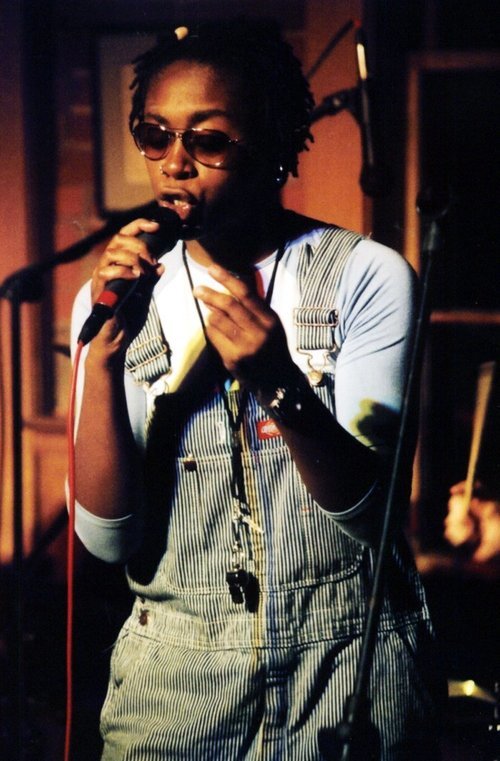
What Can Aimn Offer the Music World?
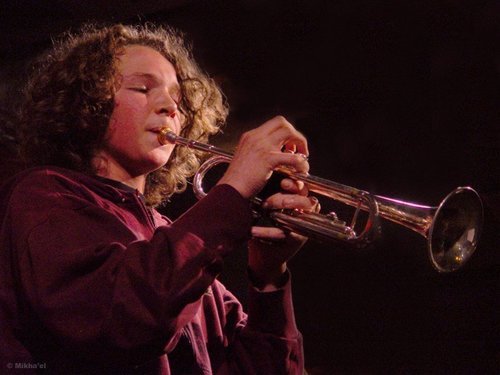
If a singer or group is embarking on a long and arduous tour, there will be a need to keep fit to deliver the best stage performance. There is no doubt that aimn.com.au can provide the perfect type of garments for this activity. The company specializes in women’s sports clothing, and they offer everything for the female artist who only wants the best. Some of the ways to keep fit during tours or performances are to undertake a gym workout, a run or jog, or maybe even surfing in the warmer parts of the world such as Australia. This range of sports clothing can meet your needs whatever you choose to do.
Promoting an active lifestyle is one of the objectives of Aimn, and their stylish sports-clothing range features up to date unique designs, classy print finishes, and a wide range of colors. There is something for every established or up and coming music star. One pop star synonymous with designer sportswear is “Sporty Spice,” who usually turned up for performances with the Spice Girls wearing classy designer sportswear such as the garments provided by Aimn. This is elegant yet practical and comfortable sportswear can be perfect for those energetic stage routines.
Types of Sportswear Available
Aimn offers everything for the enthusiastic sports and fitness fan. The company provides various garments such as comfy sweatpants, ribbed seamless colored tights, high-end sneakers, hoodies, caps, comfortable sweatshirts, and elegantly designed shorts. The company also offers a range of jackets and tops, stylish accessories and bags, sports bras, and handy hydration bottles for your favorite energy drink. If you like to swim during your breaks in performances, why not try out their exclusive range of high-quality swimwear? Designer female tee-shirts and classy underwear would suit even the most discerning singer or musician. Their products come in a variety of vibrant colors such as:
- Beige
- Black
- Blue
- Brown
- Dark
- Green
- Grey
- Pink
- Purple
- Sand
- White
Some products such as leggings are also available in sumptuous print patterns specially designed by Aimn to add that touch of class and elegance when relaxing between gigs. They offer a wide choice of different sizes, ensuring that you can pick any product knowing that it will provide a comfortable fit.
Summary
For any female performer or artist, an interest in keeping fit and wearing the right clothing is a must. A healthy outlook will enable any female musician to look good and feel better able to cope with the rigors of live shows. Aimn offers the perfect choices to help to achieve this.


